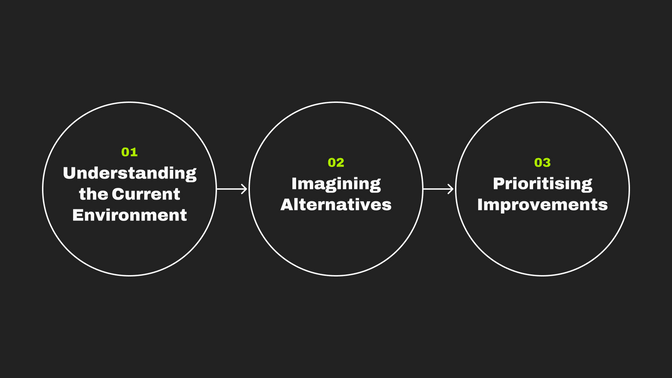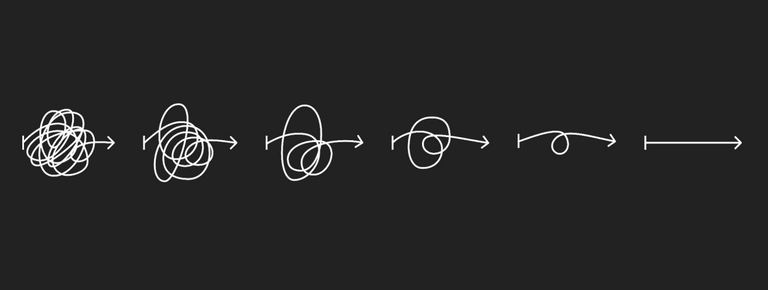The digital transformation that we hear so much about is not just a matter of updating tools and adopting the latest technology. Our project with ECA Vaud is the most recent example of this.
ECA (Établissement cantonal d’assurance) is the cantonal insurance institution for Vaud. It serves the public and businesses through three key missions: prevention, fire and rescue services, and insurance. Its internal structure includes a broad range of professions, from administrative roles to the operational work of firefighters, each with its own challenges and level of digital maturity. ECA turned to us for expert guidance and support in navigating their essential digital transformation.
Strategic Consulting
Although we are better known for the agile development of websites, apps and digital platforms, we also offer consulting services. Our projects include a strategic consulting component to define the right solution, understand its users and ensure responsible digital practices.
When we think of consulting, two things often come to mind. On the one hand, the specialist with highly specific skills can provide temporary support during a delicate project phase. On the other hand, there is the longer-term delegation of employees/specialists. At Liip, we offer both options, providing clients with expert input for a defined period, without the need to hire. Importantly, we never aim to create dependency: we do not want to lock clients into our tools or services.
Digital Transformation Doesn’t Mean Changing Everything
Being a consultant means offering not just expertise, but also an external and independent perspective on technology. We don’t want to sell you specific tools or systems. Instead, we bring a holistic, user-focused mindset. We’re not here to replace the existing setup just for the sake of it. Our approach is deeply understanding the organisation’s context, particularly the human aspects often overlooked in more technology-centric consulting.
Our collaboration with ECA is a strong example of our vision for consulting, one that enables both digital and human progress.
A Multidisciplinary Team with a Three-Phase Approach
For this project, we assembled a team of experts in agile project management, service design, user experience, and information systems architecture. To address ECA’s challenges effectively, we followed a three-phase methodology:

Phase 1: Understanding the Current Environment, A Crucial, Often Overlooked Step
Successful consulting starts with a detailed understanding of the current landscape, both technical and human. We map out the entire technological architecture while documenting the key internal and external stakeholders and their interactions with systems, interfaces, documentation, and applications.
Interviews and Workshops to Explore the Human and Technical Dimensions
During this initial phase, we conduct interviews, two people per division in the case of ECA, and workshops. These efforts feed into a service blueprint: a schematic representation of stakeholders’ activities. This blueprint connects user experience with business processes, IT dependencies, and internal roles. It also includes business processes that are currently only partially, or not at all digitised.
One of the challenges at this stage is resisting the urge to jump straight into identifying what needs to change. While those ideas are valuable, they are far more effective once everyone shares a clear understanding of the starting point or initial situation. Put simply, it’s hard to agree on the finish line if we can’t agree where the race begins. This step includes a gap analysis between the current digital touchpoints and an ideal future experience.
Phase 2: A Different Future Is Possible
Once the organisation’s current environment is clearly documented, we move to the next step. Through further interviews and workshops, we identify the gaps between where the organisation is today and where it aims to be.
Different Needs, Expectations, and Levels of Digital Maturity
ECA is a diverse organisation. Its divisions differ significantly in how far they’ve come in their digital journey, and in what they expect from it. It’s important not to open a Pandora’s box of ideas that risk leading to unmet expectations. Instead, we work to identify common denominators.
In the midst of this diversity, we also look to consolidate. Duplication across large organisations is nearly inevitable, but there are often opportunities for synergy. We frequently find that different teams use separate tools to solve similar problems. In some cases, a tool already in place could be extended to meet additional needs, eliminating the requirement to develop or purchase something new. This requires thinking beyond organisational silos. A transformation of this kind can reshape not just tools and workflows, but also how teams collaborate. It’s even an introduction to agile working methods, for some clients , something we’re always happy to encourage.
Phase 3: Prioritising Improvements
With a clear view of the different business needs, the next step is making informed choices. This final phase is all about identifying the right priorities, aiming to maximise the value of every franc invested in digital progress.
Return on Investment as a Key Decision-Making Tool
To meet business needs, we build a backlog of “epics”, large development tasks that can be broken down into smaller user stories, as per agile methodology. Each epic is assessed in terms of potential value (for instance, how many users it would impact).
We then estimate the effort required to develop each epic, typically expressed in sprints. Comparing expected value to estimated investment helps us deliver a roadmap for an ideal digital transition.
Recommending an Action Plan, Not a Shopping List
At this stage, we avoid recommending specific technical solutions. That decision belongs to the client. Instead, we offer a curated list of technology options, clearly laying out the pros and cons of each.
Supporting Informed Decision-Making
Our final report aims to empower ECA’s leadership to make smart, informed choices about where to focus next. This shared understanding of priorities and direction has also helped break down historic silos between divisions and roles.
In future blog posts, we’ll take a closer look at the complementary approaches of design (service design and user experience) and systems architecture as applied in this consulting assignment.
Is your organisation planning or preparing for a digital transformation? I’d love to hear more about your goals and challenges. I look forward to discussing this with you.

